 Sesame is an important item in the traditional diet of the Shan people in Mae Hong Son. In addition to the various sweets that employ the seed, sesame is also used for its oil. Most places in Mae Hong Son use a mechanical press to make sesame oil, but one place in Ban Pang Muu, about 5km north of the provincial capital, still does it the old way: by buffalo.
Sesame is an important item in the traditional diet of the Shan people in Mae Hong Son. In addition to the various sweets that employ the seed, sesame is also used for its oil. Most places in Mae Hong Son use a mechanical press to make sesame oil, but one place in Ban Pang Muu, about 5km north of the provincial capital, still does it the old way: by buffalo.
They begin with dried sesame, shown above. When the pods are fully grown and dried, they open themselves, and getting the seeds out simply involves turning them over and shaking them out. The seeds are washed thoroughly, dried, and are ready to go
A bit of a water is added to the large wooden mortar-like vessel:

followed by the seeds themselves:

which have been washed thoroughly and dried slightly, but are not roasted beforehand, as in Chinese-style sesame oil:

A rather reluctant buffalo is connected to a large wooden 'pestle' and proceeds to walk around in circles, driving the pestle and crushing the seeds:

It takes about three hours to extract all the oil, and the guy above has to walk with the buffalo the entire time, otherwise it will stop:

After an hour or so the oil begins to separate from the seeds and rises to the top. After three hours it's simply scooped out by hand. It takes 15kg of seeds to produce 4kg of oil, which is then put old whiskey bottles and sold in the province's markets:

To see this process firsthand, visit:
Pang Moo Organic Sesame Project 255/1 Moo 1, Pang Moo, Mae Hong Son 053 612 534












 I'm usually not a huge fan of Thai desserts, but have really been enjoying the sweet stuff up here in Mae Hong Son, northern Thailand. The majority of people in this province are Shan, also known as Thai Yai (or Tai), and have a different set of sweet stuff than the Thais. Essentially, they've made due with the limited set of ingredients they have at hand: rice (regular or sticky, or sometimes wheat flour), sesame and sugar, often from sugarcane (rather than from palm sugar, as is typically the case with southern Southeast Asia).
I'm usually not a huge fan of Thai desserts, but have really been enjoying the sweet stuff up here in Mae Hong Son, northern Thailand. The majority of people in this province are Shan, also known as Thai Yai (or Tai), and have a different set of sweet stuff than the Thais. Essentially, they've made due with the limited set of ingredients they have at hand: rice (regular or sticky, or sometimes wheat flour), sesame and sugar, often from sugarcane (rather than from palm sugar, as is typically the case with southern Southeast Asia).



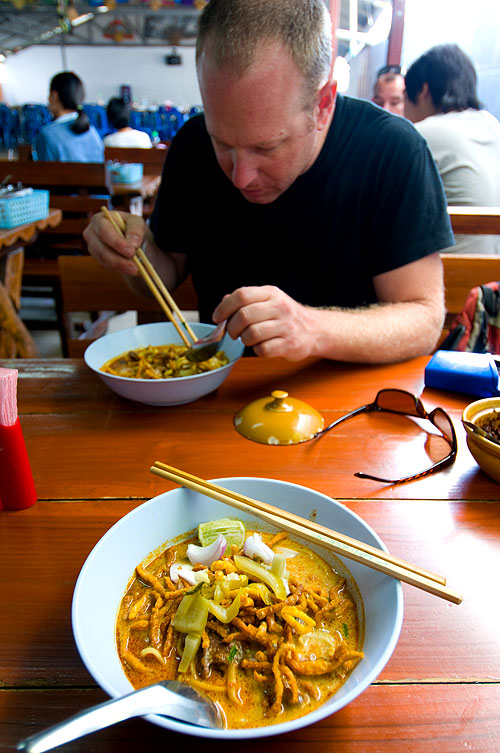 As if I haven't been going on about it enough already, I have more exciting khao soi-related news. I was lucky enough to meet up with Andy Ricker of
As if I haven't been going on about it enough already, I have more exciting khao soi-related news. I was lucky enough to meet up with Andy Ricker of 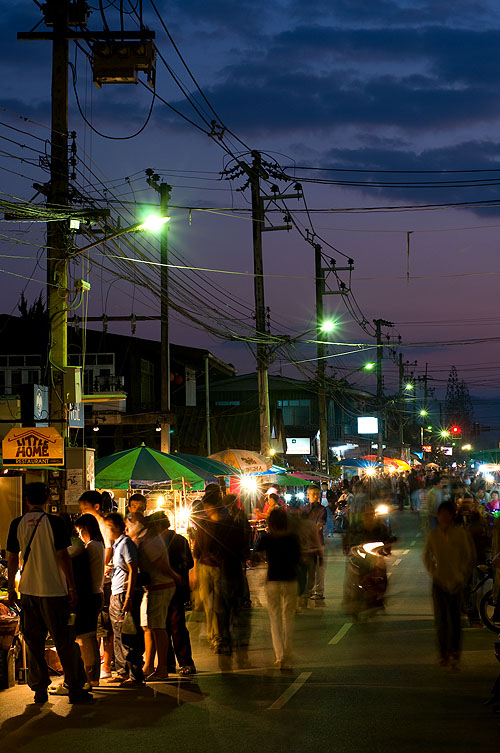 Main street, Pai, during the tourist season, Mae Hong Son, northern Thailand
Main street, Pai, during the tourist season, Mae Hong Son, northern Thailand 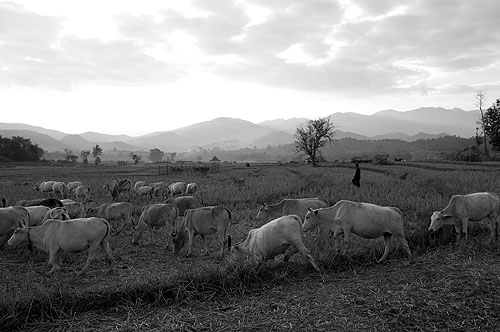
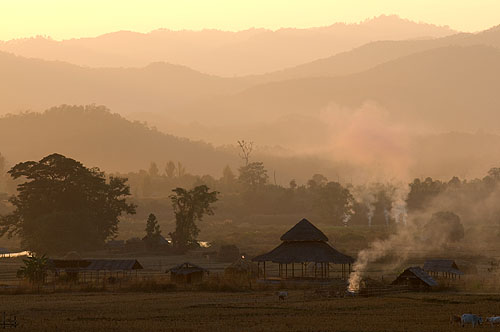
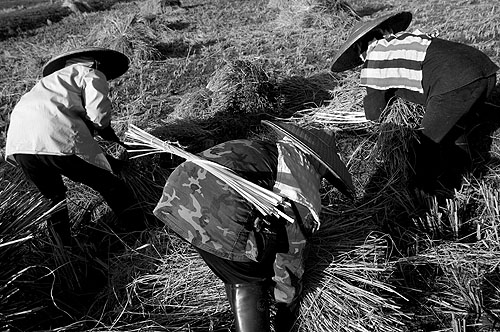
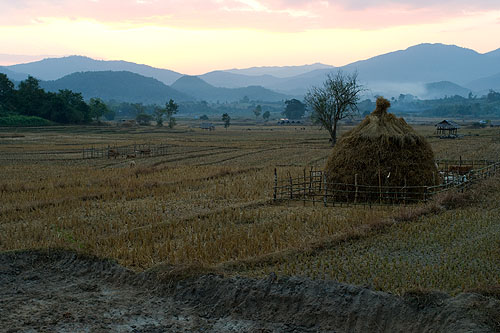
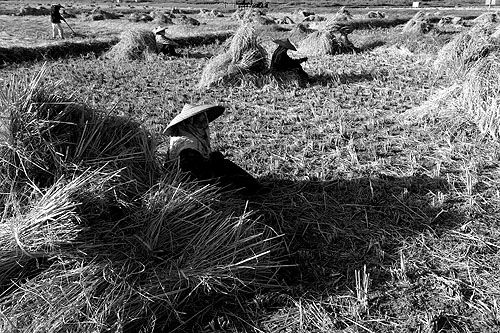
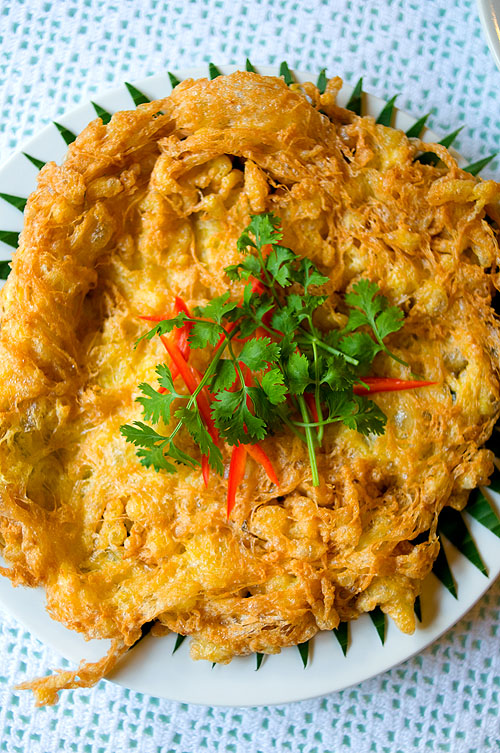

 then stop by my exhibition, The Last Chinatown, which begins tomorrow, December 6th, at
then stop by my exhibition, The Last Chinatown, which begins tomorrow, December 6th, at 

 well, I'm not exactly sure what, but it certainly is in the press lately. First of all,
well, I'm not exactly sure what, but it certainly is in the press lately. First of all,  When I was up in Chiang Rai I had excellent northern-style noodles at a place called
When I was up in Chiang Rai I had excellent northern-style noodles at a place called 

 The bowl above is, for now at least, the final entry in my gratuitous khao soi series. I had eaten at this same khao soi shop nearly a decade ago when a friend and I were doing some exploring in Doi Phu Kha National Park in Nan. After a few days in the jungle, we eventually emerged at Ban Bo Klua, and at what appeared to be the town’s only restaurant found both food and accommodation. I don’t recall what we thought of the khao soi then, but I was sure I wanted to eat it again this time, the opportunity being a perfect nostalgic bookend to my seven-part epic khao soi feature.
The bowl above is, for now at least, the final entry in my gratuitous khao soi series. I had eaten at this same khao soi shop nearly a decade ago when a friend and I were doing some exploring in Doi Phu Kha National Park in Nan. After a few days in the jungle, we eventually emerged at Ban Bo Klua, and at what appeared to be the town’s only restaurant found both food and accommodation. I don’t recall what we thought of the khao soi then, but I was sure I wanted to eat it again this time, the opportunity being a perfect nostalgic bookend to my seven-part epic khao soi feature.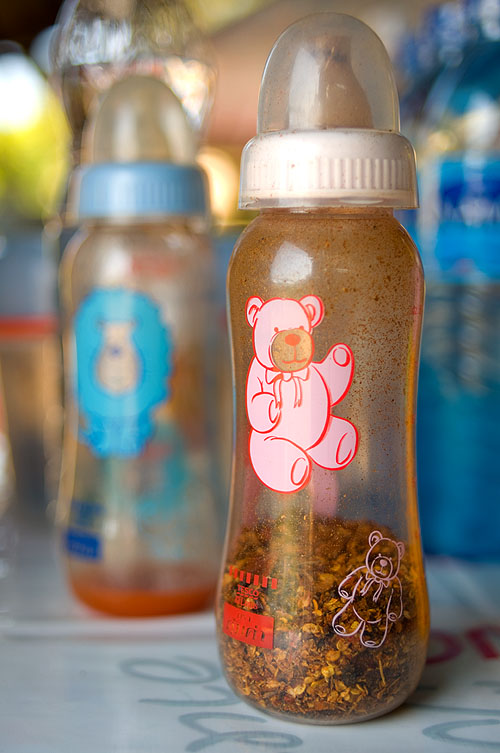 Seen at a restaurant in Baan Huay Kon, Nan.
Seen at a restaurant in Baan Huay Kon, Nan. Ban Bo Luang lies in far western Nan province, only a dozen kilometres from the Lao border. The town is nestled in an incredibly picturesque valley with forested mountains on either side and is inhabited by three ethnic groups: Htin, Lua and northern Thai. The town is colloquially known as Ban Bo Klua (Salt Well Village) because the town's well produces extremely salty water. You'd think this would be horrible luck (in fact there are freshwater wells and a beautiful stream there as well), but from this well the locals have been extracting ‘mountain salt’ for an estimated 300 years.
Ban Bo Luang lies in far western Nan province, only a dozen kilometres from the Lao border. The town is nestled in an incredibly picturesque valley with forested mountains on either side and is inhabited by three ethnic groups: Htin, Lua and northern Thai. The town is colloquially known as Ban Bo Klua (Salt Well Village) because the town's well produces extremely salty water. You'd think this would be horrible luck (in fact there are freshwater wells and a beautiful stream there as well), but from this well the locals have been extracting ‘mountain salt’ for an estimated 300 years.



 Phayao, a small town that most Thais aren’t even aware exists, turned about to be one of the more pleasant destinations of my trip. The town’s setting at the edge of a vast swamp is a lot more interesting than it sounds, and the city also had some very tasty food
Phayao, a small town that most Thais aren’t even aware exists, turned about to be one of the more pleasant destinations of my trip. The town’s setting at the edge of a vast swamp is a lot more interesting than it sounds, and the city also had some very tasty food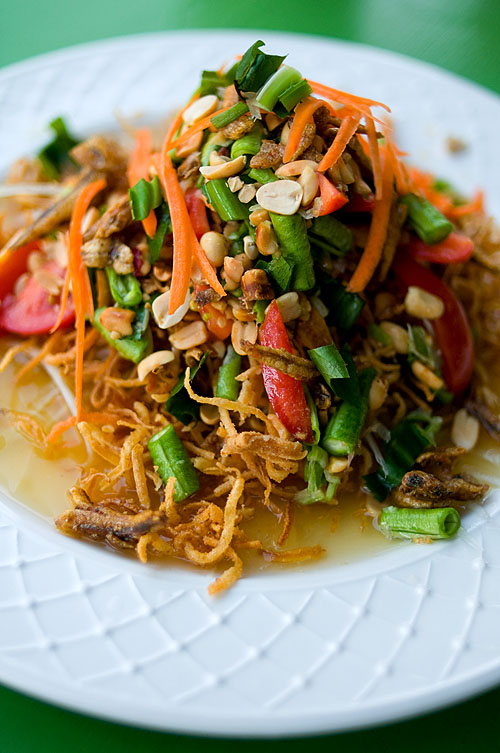 Som tam, green papaya salad, is probably the most popular dish in Thailand. The dish likely originates in northeastern Thailand, or perhaps Laos, but can now be found in virtually every corner of the country. It's equal parts cheap, spicy, quick and satisfying, leaving little wonder why it's become so popular.
Som tam, green papaya salad, is probably the most popular dish in Thailand. The dish likely originates in northeastern Thailand, or perhaps Laos, but can now be found in virtually every corner of the country. It's equal parts cheap, spicy, quick and satisfying, leaving little wonder why it's become so popular. This bowl of chicken khao soi was downed in the lovely city of Nan. The restaurant is located about a two-minute walk from Wat Phumin, my favourite Buddhist temple in Thailand. Wat Phumin's Buddhist murals, executed by a Thai Lue artist called Thit Buaphan in the late 19th century, are exquisite; this bowl of khao soi was merely acceptable. Sweet was the dominating flavour, if I remember correctly, although the dab of plain coconut cream was a welcome aesthetic flourish.
This bowl of chicken khao soi was downed in the lovely city of Nan. The restaurant is located about a two-minute walk from Wat Phumin, my favourite Buddhist temple in Thailand. Wat Phumin's Buddhist murals, executed by a Thai Lue artist called Thit Buaphan in the late 19th century, are exquisite; this bowl of khao soi was merely acceptable. Sweet was the dominating flavour, if I remember correctly, although the dab of plain coconut cream was a welcome aesthetic flourish. Nan, a little-visited city in northern Thailand, has a great atmosphere, an attractive setting, friendly people and some of the most beautiful temples in the country. Unfortunately, it also has one of the worst eating scenes of any city in Thailand.
Nan, a little-visited city in northern Thailand, has a great atmosphere, an attractive setting, friendly people and some of the most beautiful temples in the country. Unfortunately, it also has one of the worst eating scenes of any city in Thailand. Located almost exactly halfway between Chiang Saen and Sop Ruak ('The Golden Triangle'), Jinda's Kitchen claims to have been making northern-style dishes for 50 years. They have a small menu of only about six or eight items, one of which was, of course, khao soi. Her version was decent, a little on the bland side, I must admit, but her khanom jeen nam ngiaw (unfortunately I ate it before I remember to take a pic) was fantastic, probably among the best I've consumed. Either way, it's worth a stop, as there's little in the way of good food, particularly that of the local variety, in this corner of Chiang Rai.
Located almost exactly halfway between Chiang Saen and Sop Ruak ('The Golden Triangle'), Jinda's Kitchen claims to have been making northern-style dishes for 50 years. They have a small menu of only about six or eight items, one of which was, of course, khao soi. Her version was decent, a little on the bland side, I must admit, but her khanom jeen nam ngiaw (unfortunately I ate it before I remember to take a pic) was fantastic, probably among the best I've consumed. Either way, it's worth a stop, as there's little in the way of good food, particularly that of the local variety, in this corner of Chiang Rai. Andy Ricker, owner of
Andy Ricker, owner of  If you can read Thai, and spend enough time in northern Thailand, eventually you'll start to see the word luu on restaurant signs just about everywhere. I had a vague notion of this northern dish, knew it was something blood-related, and noticed that it always seemed to be found to be at restaurants that serve the famous northern-style laap. But other than this, I had never seen or sampled it. Recently in Phrae, I was able to get a crash course in luu.
If you can read Thai, and spend enough time in northern Thailand, eventually you'll start to see the word luu on restaurant signs just about everywhere. I had a vague notion of this northern dish, knew it was something blood-related, and noticed that it always seemed to be found to be at restaurants that serve the famous northern-style laap. But other than this, I had never seen or sampled it. Recently in Phrae, I was able to get a crash course in luu.

 If you'll allow me to backtrack a bit, I forgot to mention that I did eventually find a decent version of khao soi in Chiang Rai. Sold at the side of the street under two gigantic trees, Somkhuan Khao Soi does a pretty good bowl, his broth having the smokey flavour of chako, a dried spice that some vendors use in their curry paste mixture. Khanom jeen nam ngiaw is also available.
If you'll allow me to backtrack a bit, I forgot to mention that I did eventually find a decent version of khao soi in Chiang Rai. Sold at the side of the street under two gigantic trees, Somkhuan Khao Soi does a pretty good bowl, his broth having the smokey flavour of chako, a dried spice that some vendors use in their curry paste mixture. Khanom jeen nam ngiaw is also available.